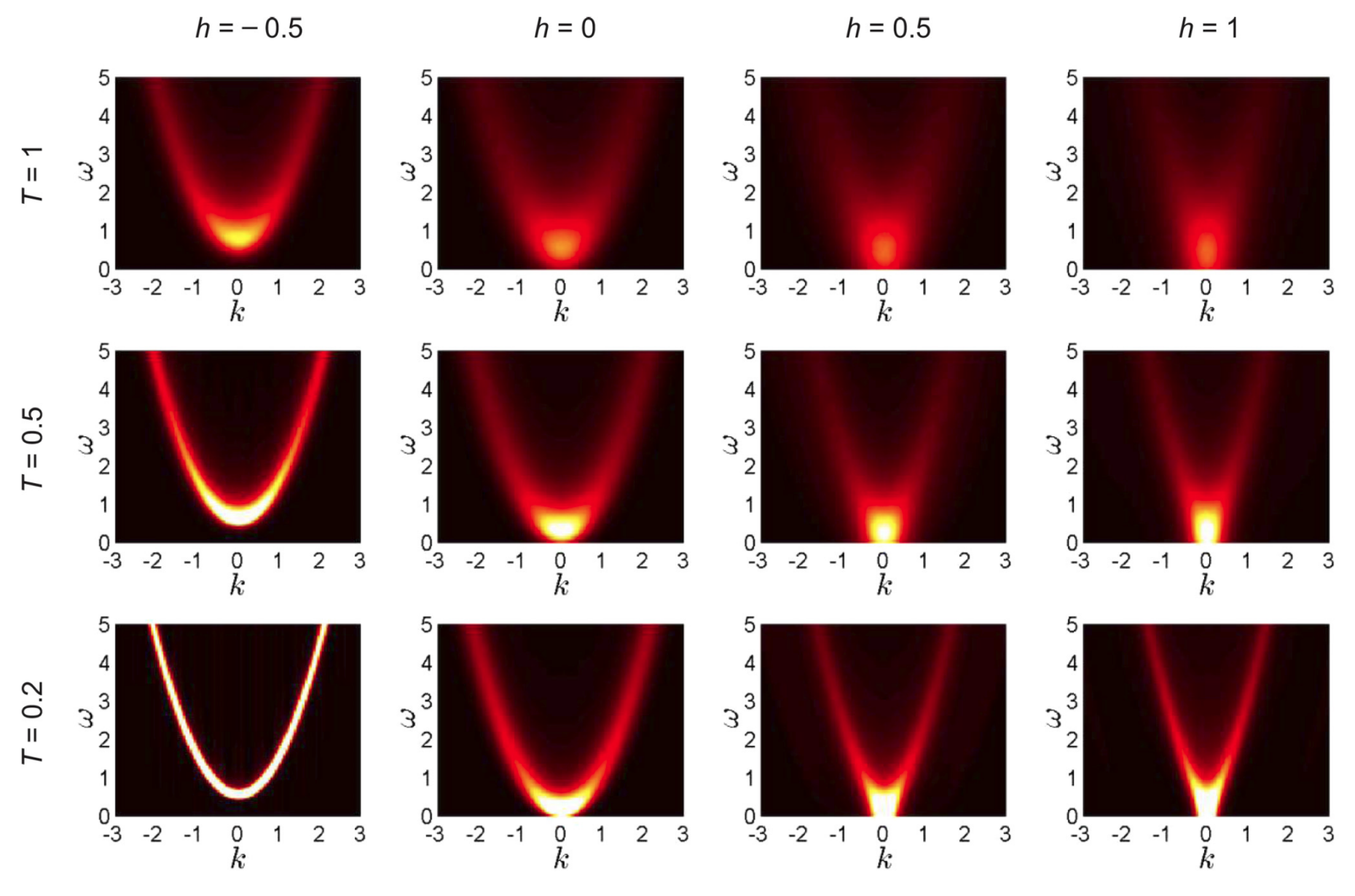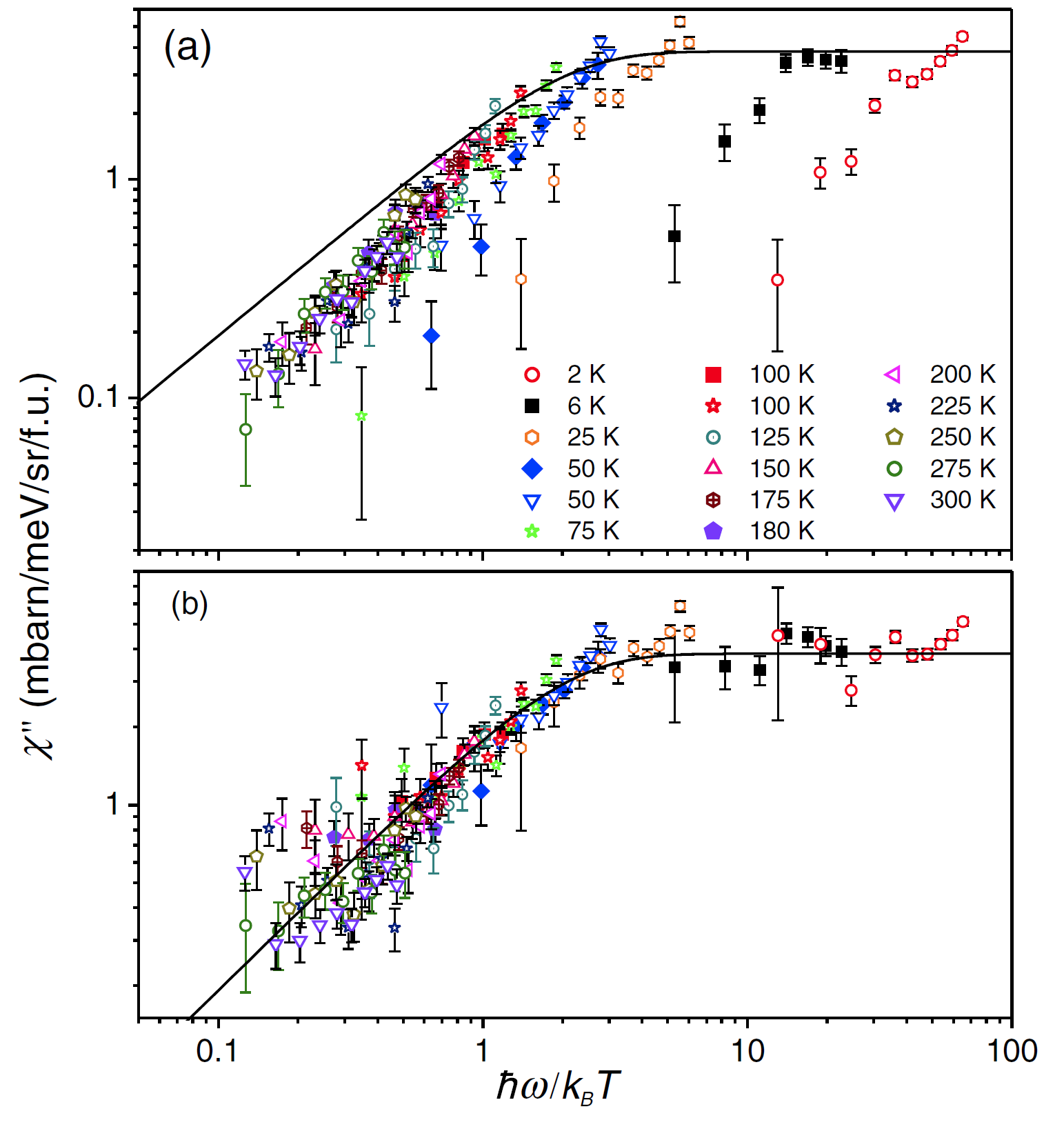Theory
Perhaps more than any other area of solid state physics, in quantum magnetism experiment goes hand in hand with theory. It is always hard to say "who started it". This is particularly true for neutron scattering which quantitatively measures exactly the same spin correlations functions that theorists like to calculate. The theoretical models that describe quantum magnetism and find real-world incarnations in our materials are usually of a very high degree of mathematical sophistication. We are obviously not "professional" theorists but we are very good at collaborating with such. Occasionally we even dabble in theoretical calculations ourselves.
One recent example is a work we did with Prof. Mila's group at EPFL. He realized that some very peculiar features in our inelastic neutron data on the spin ladder material BPCB represent a novel field-induced magnon bound state. We then worked very closely to quantitatively compare our scattering results with numerical Density Matrix Renormalization Group (DMRG) calculations. For more details see external page M. Nayak, D. Blosser, A. Zheludev and F. Mila, Phys. Rev. Lett. 124, 087203 (2020).

Another wonderful collaboration was with Prof. Giamarchi at University of Geneva on finite-temperature dynamics of quantum spin chains near saturation. Prof. Giamarchi's pioneering finite-T DMRG numerical calculations helped make sense of our neutron scattering results on the K2CuSO4Cl2 material. We are very proud that the semi-analytical calculations in this study were done by our student Dominic Blosser. He was able to evaluate the space-time correlation function for hard core Bosons in one dimension at a finite temperature (see below). For more details see external page D. Blosser, N. Kestin, K. Yu. Povarov, R. Bewley, E. Coira, T. Giamarchi, and A. Zheludev, Phys. Rev. B 96, 134406 (2017). This result was later applied in our work on finite-T dynamical scaling at the z=2 d=1 field-induced quantum critical point in the spin ladder BPCB [external page D. Blosser, V. K. Bhartiya, D. J. Voneshen, and A. Zheludev, Phys. Rev. Lett. 121, 247201 (2018)].

A few times we dared to perform theoretical calculations without any support from professionals. In one case we developed a mapping of a partially depleted quantum spin ladder into a random spin chain model with no depletion but sign-alternating interactions. We then used direct diagonalization to compute properties of this effective model for a comparison with experiment and Quantum Mont Carlo (QMC) simulations of the ladder model. For more details see external page D. Schmidiger, K. Yu. Povarov, S. Galeski, N. Reynolds, R. Bewley, T. Guidi, J. Ollivier, and A. Zheludev, Phys. Rev. Lett. 116, 257203 (2016).

The work we did with Prof. Chernyshev at University of California at Irvine addressed the mysterious issue of the impurity-induced spin gap in SrCuO2 and Sr2CuO3 spin-chain materials. Debunking numerous wild theories, we showed that the physics is that of spinons-in-a-box. The gap is actually a pseudgap for which we derived an exact analytical expression. The theory quantitatively describes spin dynamics in depleted spin chains even at a finite temperature. For more details see external page G. Simutis, S. Gvasaliya, M. Månsson, A. L. Chernyshev, A. Mohan, S. Singh, C. Hess, A. T. Savici, A. I. Kolesnikov, A. Piovano, T. Perring, I. Zaliznyak, B. Büchner, and A. Zheludev, Phys. Rev. Lett. 111, 067204 (3013).
